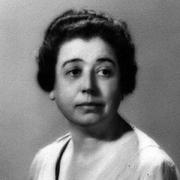Katherine Bashford facts for kids
Quick facts for kids
Katherine Bashford
|
|
|---|---|
 |
|
| Born | August 18, 1885 Prescott, Arizona
|
| Died | June 3, 1953 (aged 67) |
| Nationality | American |
Katherine Emilie Bashford (1885–1953) was an American landscape architect. She designed beautiful gardens for homes. She also planned the outdoor spaces for public housing projects in Southern California.
Contents
Early Life and Learning
Katherine Bashford was born on August 19, 1885, in Prescott, Arizona. She was one of four children. Her family was well-known in politics. Katherine's great-uncle, Coles Bashford, even helped start the Republican Party. In 1894, her family moved to California. Katherine spent most of her life there.
Katherine went to Polytechnic High School in Pasadena. She also attended the Marlborough School for Girls. She finished there in 1905. She studied at the Otis Art Institute in Los Angeles. But she mostly taught herself about design.
To learn about landscape architecture, she traveled. She visited gardens in Europe before World War I. She went again in 1924. She especially liked gardens in Spain and Italy. These places have climates similar to Southern California. She also worked for two years with landscape architect Florence Yoch. This was like an internship, starting in 1921.
Designing Outdoor Spaces
Starting Her Own Business
Katherine Bashford began designing flower gardens in 1917. She worked from her home on a small scale. After her training with Florence Yoch, she opened her own office. This was in Pasadena in 1923. She focused on gardens for private homes.
She hired Hinda Teague Hill as her office manager. Hinda helped Katherine promote her business. She wrote articles about landscape design. Later, Katherine hired Beatrice M. Williams. Beatrice was a trained landscape architect. She helped with the larger gardens that became popular.
In 1928, Katherine moved her office to downtown Los Angeles. It stayed there for the rest of her career. Katherine was very artistic and good at business. This made her one of the most respected landscape architects in Southern California. She was always in demand for her work. Many famous architects worked with her often. These included Wallace Neff and Roland Coate.
Katherine's garden designs were influenced by European styles. But she also liked a more relaxed look. She did not like plants placed right against a house. She preferred a simple style that felt right for people. Her gardens used many native plants. She also used plants that grew well in Southern California. She was one of the first designers to think of gardens as useful outdoor rooms.
She liked to group flowers by color. This created beautiful, artistic patterns. Many of her designs featured flower-lined paths. She also used patios, low tiled fountains, and benches. Fruit trees and large potted plants were also common. These ideas are now very popular in Southern California gardens. One writer said she wanted to make gardens "comply with the California spirit." They called her "a real artist."
Katherine designed gardens for many people. These included Mrs. Harry J. Bauer and William C. McDuffie. Her work for William C. McDuffie won an award. It came from the Southern California chapter of the American Institute of Architects. She also worked on the Bush House in Pasadena. Other projects included the Gate House in Carpinteria and the Sterry House in Los Angeles. She also created a special garden for El Molino Viejo in San Marino. This garden had plants from California's Spanish missions. El Molino Viejo was a water mill for Mission San Gabriel Arcángel.
Katherine sometimes wrote about landscape architecture. Her articles appeared in California Southland magazine. Her work was also praised in Architectural Digest and other magazines.
Working with Fred Barlow, Jr.
In 1930, landscape architect Fred Barlow, Jr. started working for Katherine. He became her office manager in 1931. The Great Depression made business slow down. So, in 1934, Fred Barlow took a break. In 1936, business got better. Katherine asked Fred to become her partner. Their company was then called Bashford and Barlow.
Bashford and Barlow designed many home gardens. They also worked on the landscaping for Pepperdine University. They designed outdoor areas for a hotel and a church too. Fred Barlow was a big supporter of public housing. Together, they designed the landscaping for several public housing projects. These included Ramona Gardens (1940) and Aliso Village (1942). They also worked on Rancho San Pedro and Harbor Hills in Lomita. Other projects were Avalon Gardens and Normont Terrace. Most of these were built by the Los Angeles Housing Authority. They had very small budgets.
A newspaper article about Aliso Village showed their ideas. They wanted to "restore much of the former beauty" of the area. They added plants like pepper and eucalyptus trees. They also used white oleander, California olive, and walnut trees. Brazil pepper, live oaks, and evergreen grape vines were also planted.
Later Years and Legacy
Katherine Bashford became a Fellow of the American Society of Landscape Architects (ASLA) in 1936. This is a high honor. A year later, she and Fred Barlow helped start the ASLA chapter in Southern California. In 1938, she became the first woman president of this chapter.
In 1937, Bashford and Barlow's work was shown in an art exhibit. It was at the San Francisco Museum of Art. This was the first major U.S. museum exhibit on landscape architecture.
Katherine had a heart condition. She retired in 1943. She gave her business to Fred Barlow. She passed away on June 3, 1953.
Katherine Bashford's gardens are not all well-known today. Many have been changed over time. But the ones that remain show her amazing skill in landscape design. In 2013, one of her gardens was considered for the National Register of Historic Places. This garden was the KenCott Manor garden. She designed it in 1928.

